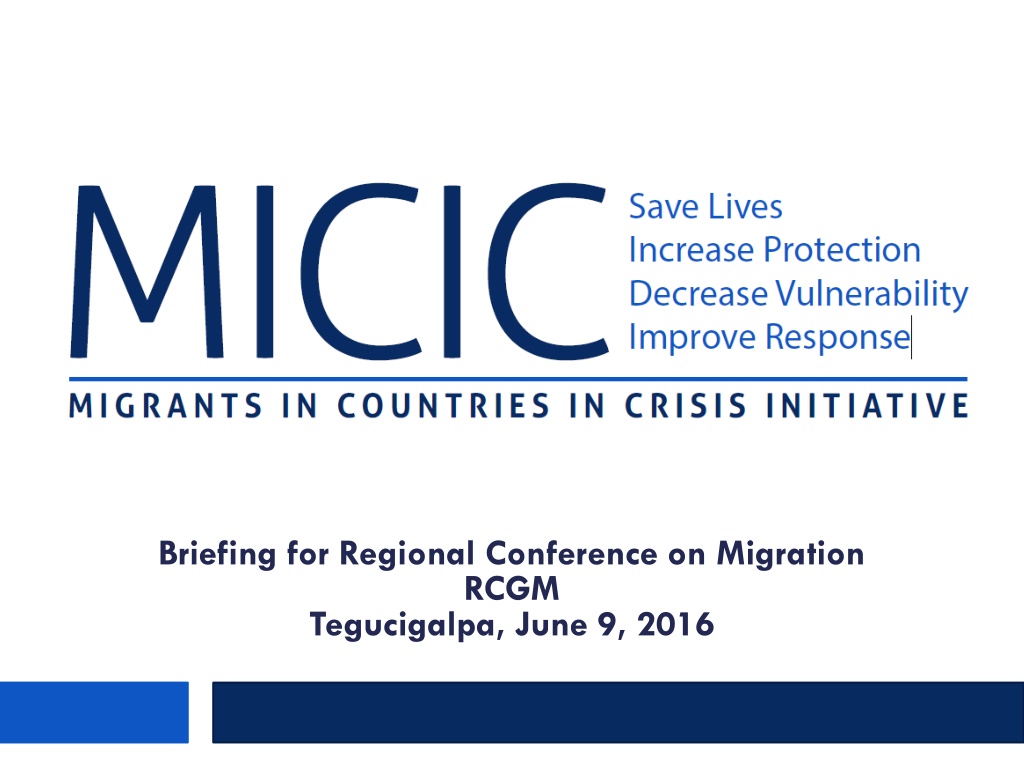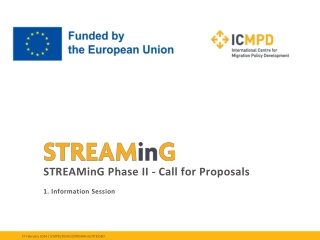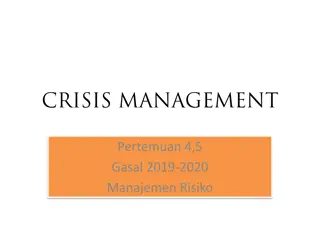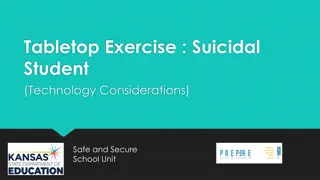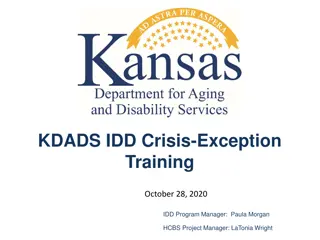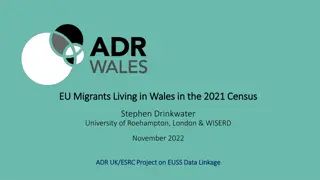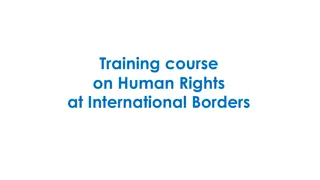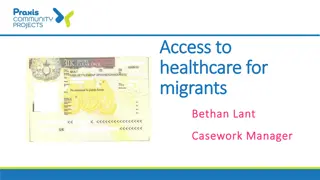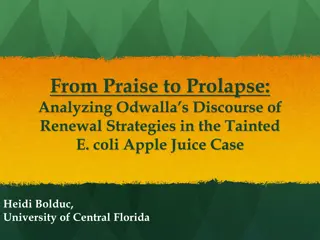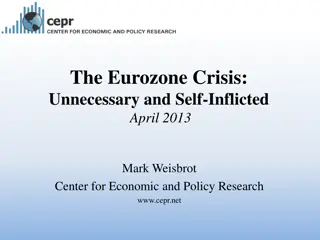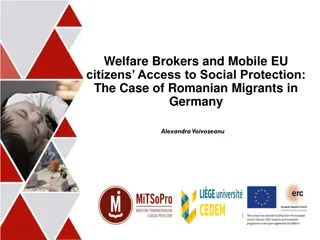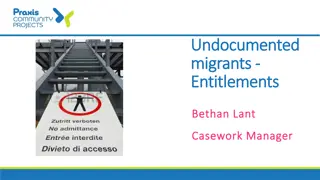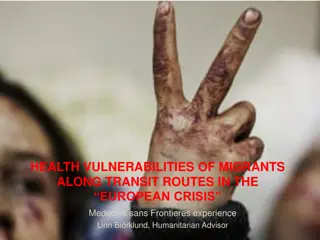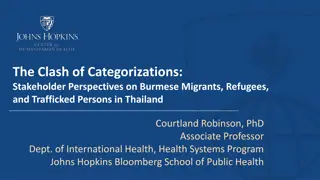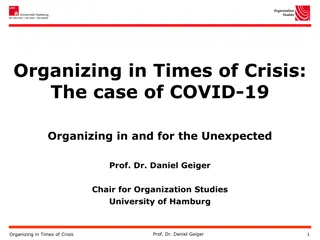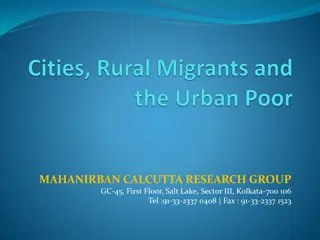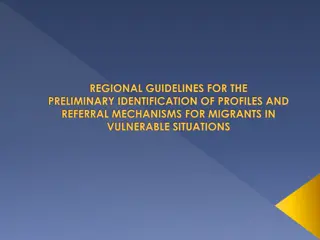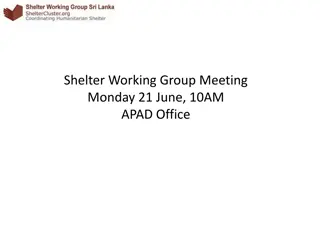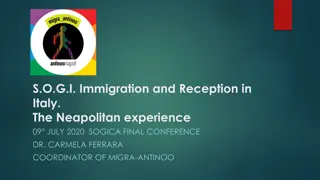Enhancing Protection and Response for Crisis-Affected Migrants
The Regional Conference on Migration held in Tegucigalpa highlighted the vulnerabilities and challenges faced by migrants, especially in the aftermath of crises like the 2011 Libya Civil Strife. The MICIC Initiative aims to increase protection, decrease vulnerability, and improve responses for migrants caught in various crisis situations, regardless of legal status or phase of the crisis. Consultations with stakeholders have been ongoing to establish principles and guidelines for better preparation and recovery in crises.
Download Presentation

Please find below an Image/Link to download the presentation.
The content on the website is provided AS IS for your information and personal use only. It may not be sold, licensed, or shared on other websites without obtaining consent from the author. Download presentation by click this link. If you encounter any issues during the download, it is possible that the publisher has removed the file from their server.
E N D
Presentation Transcript
Briefing for Regional Conference on Migration RCGM Tegucigalpa, June 9, 2016
2011 Libya Crisis Civil Strife Nearly 800,000 migrants fled; over 120 nationalities; enormous challenges for migrants and home/neighboring countries
Why Migrants? Specific Vulnerabilities and Circumstances Barriers related to language, culture, social connections Unable or unwilling to leave the country in crisis Unable to access humanitarian assistance Unable or unwilling to return to country of origin Subjected to discrimination, targeted attacks, or exploitation
Origins of the MICIC Initiative United States 2010-2011 Chairmanship of IGC: Humanitarian Responses to Crises with Migration Consequences IOM s 2012 Migration Crisis Operational Framework 2013 UN HLD on International Migration and Development: SRSG Peter Sutherland call to develop an approach UN Secretary General: call to address needs of migrants caught in crisis 2014: MICIC Initiative launched
Objectives of the MICIC Initiative Increase Protection Decrease Vulnerability Improve Response Save Lives Better preparation More effective responses Better recovery Voluntary and non-binding Principles, Guidelines and Practices
Scope of MICIC Initiative Which Crises? Which Phases? Which Migrants? In country when crisis hits Temporarily or permanently Regardless of legal status Conflict Pre-Crisis and/or Emergency Can include: Natural Disasters Migrant workers and families Tourists, business travelers, students and diplomats Victims of human trafficking and smuggled persons Marriage migrants Post-Crisis = All Phases Economic Employment Other Outcomes will complement existing frameworks and mechanisms
MICIC Initiative Consultations Consultations with governments and stakeholders until May 2016 23-Mar-15 22-Oct-15 Middle East and North Africa 30-Dec-15 East and Southern Africa 11-Jun-15 Private Sector 14-Aug-15 Civil Society Permanent Representatives to the UN MICIC Initiative Principles, Guidelines and Practices June 2016 January 2015 IGC Plus 14-Mar-16 11-Feb-15 South, East and South-East Asia 18-Apr-15 Eastern Europe and Central Asia 05-Jul-15 West and Central Africa 09-Sep-15 Central and South America 25-Nov-15 International Organizations
MICIC Principles, Guidelines and Practices Principles Guide all actions Targeted suggestions to shape policies Guidelines Technical and operational advice Practices
What We Are Learning So Far Respect for human and labor rights, and ethical recruitment Data, tracking, and contact information on migrants Standing arrangements on evacuation, consular assistance, coordination etc. Contingency planning/DRR Crisis alert systems Non- Evacuation and return services Save lives refoulement Emergency funds and insurance schemes Open borders, humanitarian border management and temporary admission Identification and Referral Systems Services upon return - livelihood creation, health, psychosocial counselling Back pay, outstanding wages, return of property, remains Re-migration and other mobility opportunities
Where to from here? Consider building on the basis of the MICIC Initiative and contemplate future, broader guidelines; Voluntary, non-binding nature provides for flexible implementation and effectiveness; See in the context of global responsibility sharing.
What We Ask of You Seek or support a welcome of the MICIC Initiative in the outcome document for 19 September UN Summit Welcome the MICIC Initiative in your oral interventions at the 19 September UN Summit Consider using the MICIC Initiative Principles, Guidelines and Practices to improve your planning, response, recovery and the assistance you provide migrants Help us raise awareness by briefing your counterparts in capitals, Geneva, and New York
Share a Practice at: http://micicinitiative.iom.int/connect/share-practice
